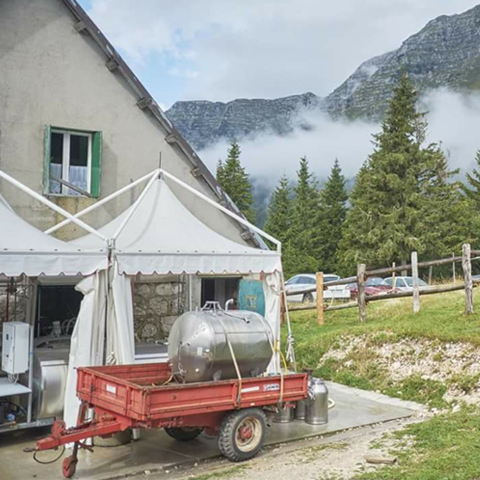
Canning tomatoes – Photo by Roberto Zazzara
While supermarkets stocked with pre-made products have become common and widely used in Italy for the past 20 years, certain antique culinary traditions remain sacred to the average Italian family, especially in the central and southern regions of the country. And now is the time, with tomatoes reaching their peak ripeness, that one of the most important traditions, once based on survival, is taking place in many a garage or garden: il “fare il pomodoro” – literally, “the making of the tomato”.

The Italian summer ritual of processing and jarring tomato sauce – or “passata di pomodoro” – goes back to the 17th century, in an attempt to avoid botulism. However, it only truly became a household tradition beginning at the end of the 19th century, when topping pasta with sauce became available to the masses, not just to the rich who could afford silverware. Before this, tomatoes that were introduced to Italy from the New World were used like cucumbers: chopped and topped with olive oil and salt and eaten as a side dish. And while Italians value eating local, seasonal food, jarring tomatoes and other summer fruits and vegetables began as a way to survive the winter months.
This day in age, Italian life is faster, with both men and women working, leaving less time to dedicate to tending the fields and concerning with household duties. It might seem only logical that working men and women would prefer to buy ready-made sauce than dedicate time to making it. However, having a bottle of tomato sauce ready to go in January that tastes as if it was processed the same day is priceless; and since Italians tend to take the month of August off when tomatoes are their ripest (a variety of tomatoes are used, depending on the region, with Roma and cuore di bue – “cow heart” tomatoes being popular), it is a must to dedicate at least one or two days to process a year’s supply of passata di pomodoro each from the tomatoes bought the night before from a trusted, local farmer. Using sterilized jars that are ready to be filled, large pots to boil the tomatoes, and processors to pulverize them (which can be found at every Italian weekly market this time of year), at the end of a long, laborious day under the hot summer sun, it will be well worth the sacrifice of not going to the beach, for when winter comes, there will always be a taste of Italian summer at the table.

Photos by Roberto Zazzara from of abruzzoservito.it
Il fare il pomodoro: not yet a dying tradition






